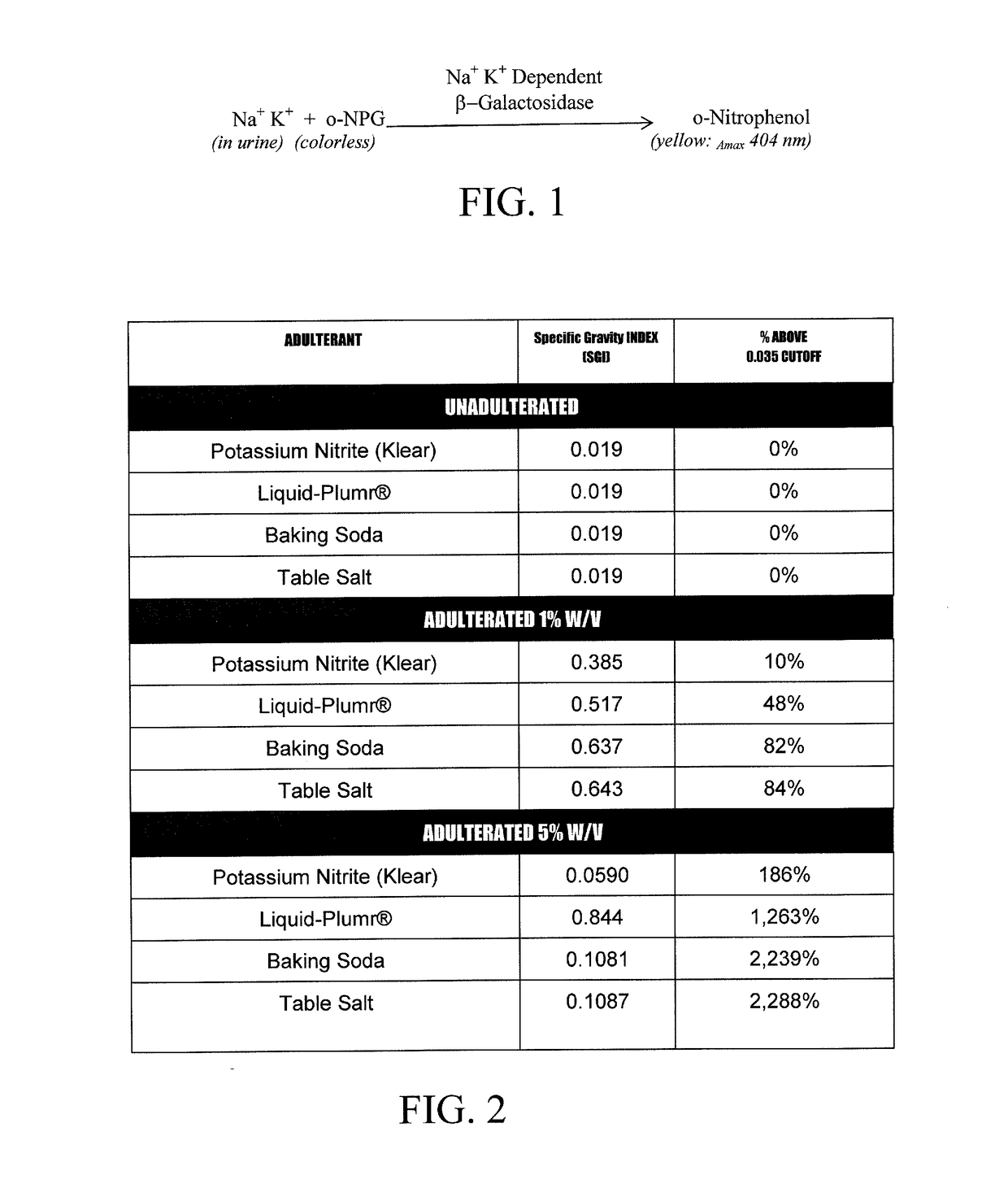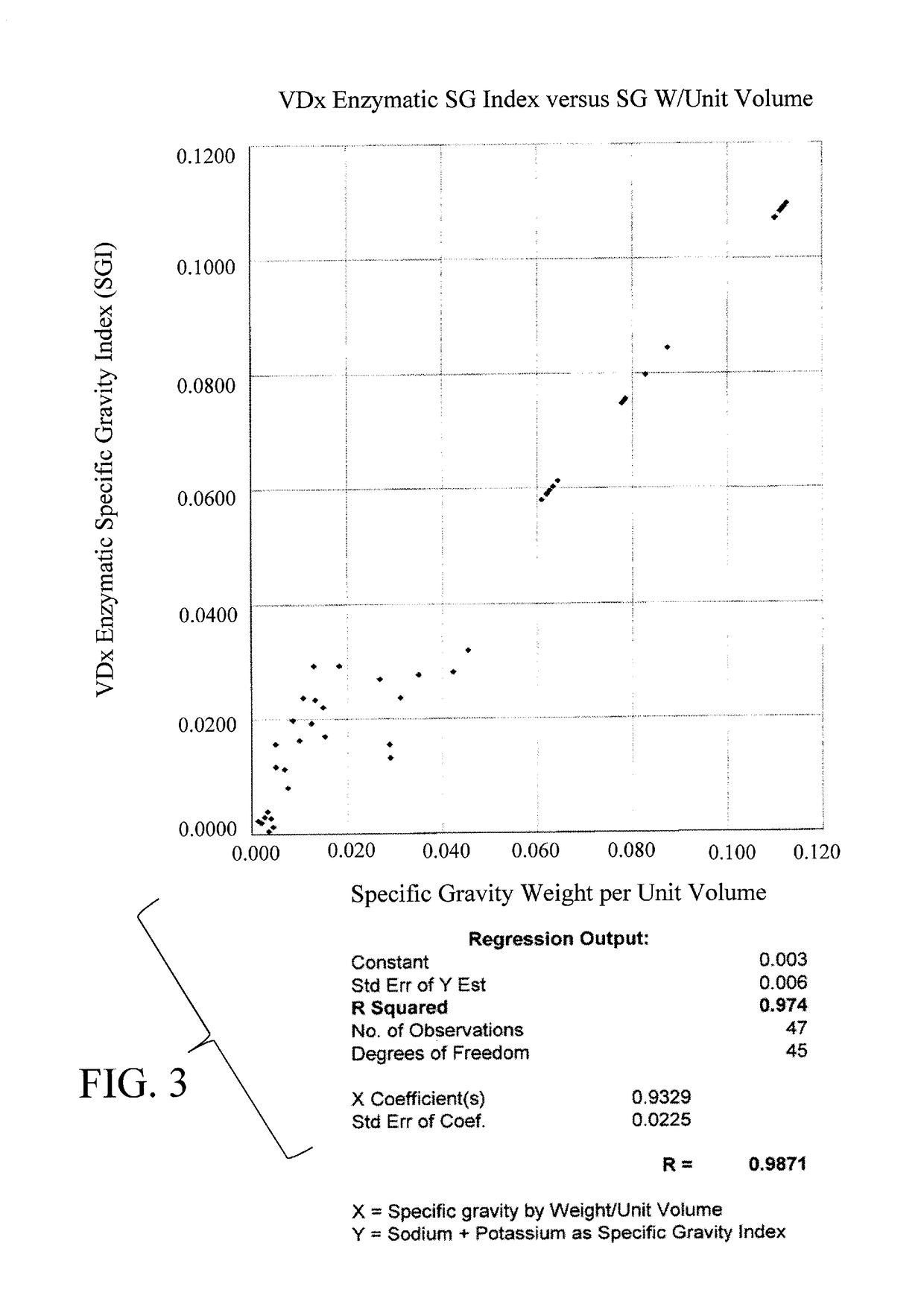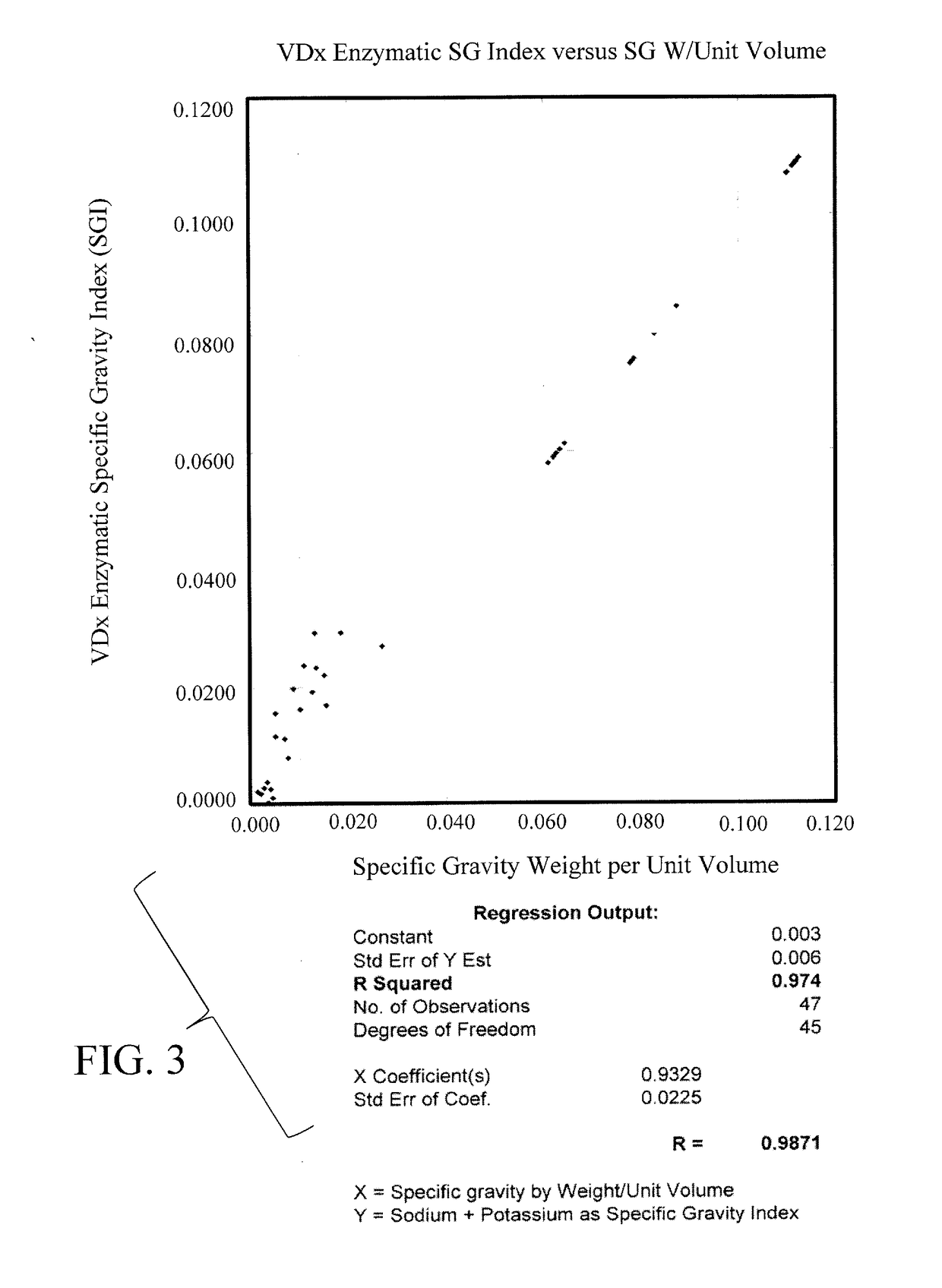Reagents and Methods of Use With Automated Analyzers For Obtaining A Specific Gravity Index For Urine
a technology of specific gravity index and urine, which is applied in the direction of material analysis, biochemistry apparatus and processes, instruments, etc., can solve the problems of negative doa, laboratory test failure to detect the presence of diluted urine, drug abuse is a critical problem, etc., to reduce the activation of -galactosidase, improve the sensitivity to the effect of urine dilution, and the overall effect of magnesium on the sgi obtained by the method of the subject invention
- Summary
- Abstract
- Description
- Claims
- Application Information
AI Technical Summary
Benefits of technology
Problems solved by technology
Method used
Image
Examples
example 1
nt of Creatinine as Validation of Specific Gravity Index (SGI) Method to Detect Dilution of Urine
[0074]It is not uncommon for urine samples to be diluted with water or another substance in an effort to dilute or mask Drugs of Abuse (DOA). This can most often be detected by methods that measure the creatinine levels in the urine. The measurement of creatinine levels in a urine sample is currently accepted as the gold standard for determining whether a sample has been diluted. Current government regulations mandate that the cut-off level for determining whether a sample has been diluted is 20 mg / dL. Thus, any sample presented that is measured with a creatinine level below 20 mg / dL is considered compromised by dilution.
[0075]Samples having a below-normal creatinine level can be further tested by measuring the specific gravity of the sample. Current tests for specific gravity are determined by measuring the uric acid levels in a sample and extrapolating a value from that measurement. If...
PUM
| Property | Measurement | Unit |
|---|---|---|
| concentration | aaaaa | aaaaa |
| specific gravity | aaaaa | aaaaa |
| specific gravity | aaaaa | aaaaa |
Abstract
Description
Claims
Application Information
 Login to View More
Login to View More - R&D
- Intellectual Property
- Life Sciences
- Materials
- Tech Scout
- Unparalleled Data Quality
- Higher Quality Content
- 60% Fewer Hallucinations
Browse by: Latest US Patents, China's latest patents, Technical Efficacy Thesaurus, Application Domain, Technology Topic, Popular Technical Reports.
© 2025 PatSnap. All rights reserved.Legal|Privacy policy|Modern Slavery Act Transparency Statement|Sitemap|About US| Contact US: help@patsnap.com



